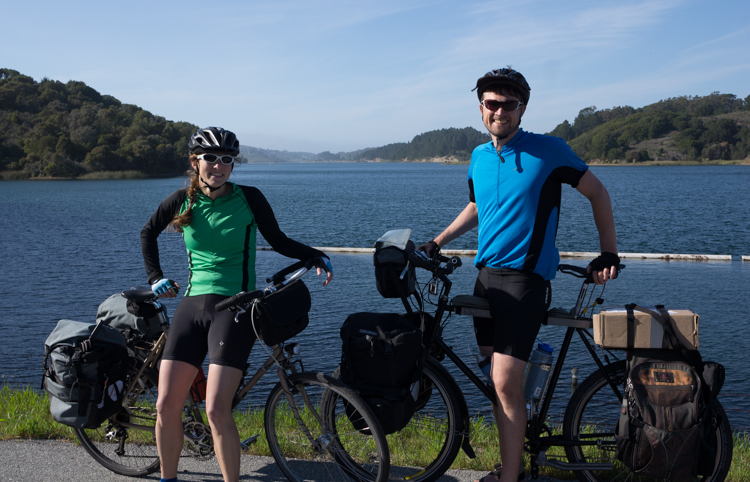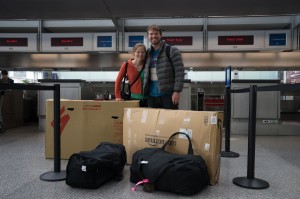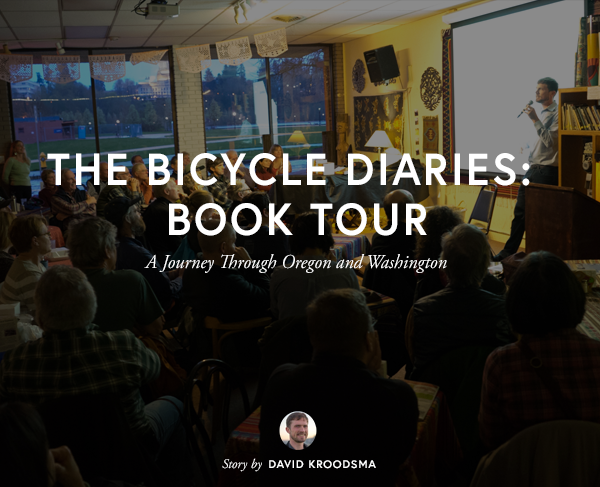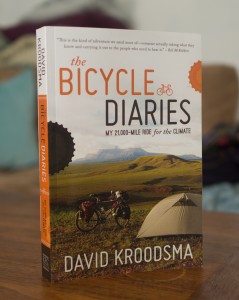Archive for the ‘General News’ Category
We’re Off!
Thursday, April 24th, 2014Why We Are Biking Across Asia
Monday, April 21st, 2014Lindsey and I just turned 35. We’re at the point in our lives when we’re supposed to start a family or plunge fully into our careers. Some of our friends are buying houses, others are waiting for their second child, and a few are negotiating for tenure track professorships. In contrast, Lindsey and I just left our jobs—hers with the state of California helping communities adapt to sea level rise, mine with a private foundation researching global environmental challenges.
Next Thursday we will pack our bikes into cardboard boxes, take them to the San Francisco airport, and get on a plane to Istanbul. And then, over the next eight to twelve months, we will pedal more than 8,000 miles from Turkey to Bangladesh.
(Note about this map: we may have to skip large parts of the route in China due to challenges with visas.)
People have asked if this is our honeymoon (we got married last November), and to some degree it is, although we started planning this journey well before we got engaged. The real reason we’re doing this ride is the same reason we chose careers focused on global environmental issues: We’re fascinated by our planet, and we want to explore it in order to better understand it and meet the people with whom we share it. And, in our opinion, the best way to experience a large swath of the Earth is to bike at 10 miles per hour for months on end, riding at the mercy of the elements and learning about the lives of people we meet along the way.

Eight and a half years ago I departed on a similar journey, leaving a research job at Stanford to bike to the southern tip of South America. As I traveled, I used my background in climate science to draw attention to the effects of climate change. My goal was to broadcast a message: Climate change is serious, and we need to act. While I reached many people with this message, through both classroom presentations and media appearances, what struck me the most was how my own views changed, and how much I learned.
While I set out to talk about climate change, I witnessed firsthand many other global challenges, such as poverty and violent conflict. Climate change is just one of many pressing problems that humanity faces, and these problems are all interconnected—we’ll have to reduce emissions while also increasing energy for people around the globe who currently use almost none. The trip also deeply personalized the threat of climate change; sharing meals with subsistence farmers who suffer due to storms and droughts, and visiting unique ecosystems that may be destroyed by rising temperatures, showed me just what is at risk.
I have captured this trip – the adventure, and what I learned – in my recent book, The Bicycle Diaries: My 21,000-Mile Ride for the Climate. On this next journey through Asia, Lindsey and I will continue the effort to put a face on climate change and to expand our own understanding of the issue. We’ll be writing here, and on our website, about our trip and about what climate change means for the places we visit.
It’s an enormous privilege to take time to explore the world, and we know that long bicycle trips documenting areas at risk won’t solve climate change (the carbon emissions from our flight to Asia will actually make it worse). But we do believe that if we’re to build public will to address this challenge, we need to do a better job understanding how our emissions affect both our backyard and the far ends of the earth. Our goal is to increase people’s understanding and encourage action through sharing what we learn – we’ll be giving presentations during our trip and when we return to the U.S.
The countries we plan to bike through face serious challenges: In Turkey and the surrounding Mediterranean region, drought is expected to increase dramatically. Water shortages may have even played a role in the ongoing conflict in neighboring Syria. The Aral Sea in Kazakhstan and Uzbekistan, once one of the world’s largest lakes, has shrunk from overuse to less than one-tenth its original size. Though not caused by climate change, this environmental disaster highlights the extent of our dependence on natural resources, many of which are threatened by rising temperatures. Further south—in Nepal, India, and Bangladesh—people in some of the most densely populated river basins in the world live under the threat of flooding every year, and rising sea levels put tens of millions of people at risk.
Or at least, that’s what we’ve read. Next week, we’re going to get on our bikes and see for ourselves. Follow us here, or on rideforclimate.com, and we’ll share with you what we learn.
An alternate method for posting photos
Tuesday, April 8th, 2014We’re still figuring out the best way to share photos from our upcoming Ride for Climate Asia journey. In the last post, you’ll see I embedded a Flickr set. Another option is using Exposure, but then you need to leave the blog posting to see it. Click on the image below.
What do you think? How should we share pictures on our trip?
Book Launch and Tour
Monday, March 3rd, 2014After 2 years of biking and 5+ years of writing and editing, I’m excited to officially launch The Bicycle Diaries: My 21,000-Mile Ride for the Climate.
The official book launch party will be on March 24th, at SPUR’s offices in downtown San Francisco — 654 Mission Street. All book sales from this celebration will support the San Francisco Bicycle Coalition.
Refreshments at 6:30pm, followed by a slideshow at 7pm. You can RSVP via the Eventbrite page.
I’m hoping to have some prizes to give away. Also, I will of course give a slideshow of the best pictures from a bicycle tour across 16 countries. I’ll also discuss the impacts of climate change on the places I visited, and will preview our upcoming bicycle tour across Asia.
After this event, I’m going on a short trip through the northwest, and I have events planned for the following dates:
-
- March 27th Tsunami Books, 4:00-5:30pm, Eugene, Oregon
- March 31st 7pm, Portland, Oregon, at Velo Cult
- April 1st, 7pm OSU Campus- Burt Hall, Rm 193, Corvallis, Oregon
- April 2nd 7pm, Seattle, Washington, Wide World Travel Store
- April 3rd 7pm, Olympia, Washington, Traditions Fair Trade
- April 4th 6:30pm, Third Place Books, Lake Forest Park, Washington
- April 7th 7:00pm, Diesel Books, Oakland, CA
Interactive Map of The Bicycle Diaries Route
Monday, January 6th, 2014As the book about my trip is about to be released, I decided to make an interactive map of the trip. Below are some points of interest along my two year bicycle journey — click on the markers and read about parts of the journey.
Ride for Climate Asia
Friday, June 14th, 2013Starting in April of this year, Lindsey and I will begin a trip that I’ve been thinking about ever since I finished my journey through Latin America: crossing Asia. We will start in Istanbul, and ride east, ending somewhere in Southeast Asia six to nine months later. Our route is not yet set, but below are some possibilities. Note that we don’t yet know how we are getting from northwest China to Nepal.
The goals of this trip are two-fold. First, we look forward to exploring a part of the world that we know relatively little about. Secondly, we plan to use our backgrounds in climate and water issues to better understand the environmental challenges facing these regions–and how these challenges compare to the other challenges faced by people in the region. We will, of course, share what we learn on this blog. Stay tuned!
New Prologue, Book Update, and Kroodsma.com
Saturday, May 19th, 2012I have just recently updated the book’s prologue, which you can see here. It has changed significantly from the previous version (and I think it better introduces you to the purpose and spirit of the journey), so I recommend taking a look.
Also, I’m currently adding, on occasion, content to my other blog, kroodsma.com, where I’m sharing interesting data visualizations.
Articles on Climate Central
Wednesday, August 10th, 2011I recently complied all of of the articles I’ve written on Climate Central, and put them here. It’s a lot of science, a bunch of maps, and some fun interactives.









